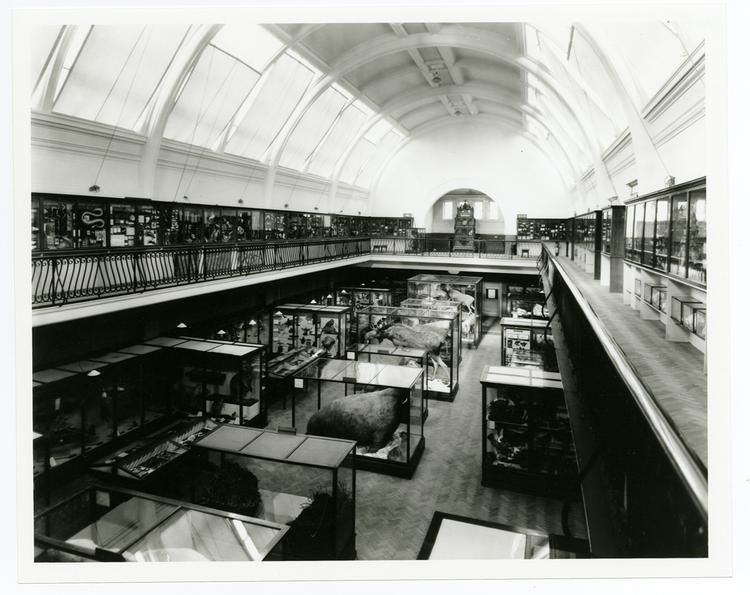In the beginning
The photograph below, taken around 1902, shows a number of North American mammals positioned down the middle of the gallery, including our walrus.
These mammals were first exhibited in the Canadian Section of the Colonial and Indian Exhibition, London in 1886 and were bought by Frederick Horniman to enhance his museum displays.
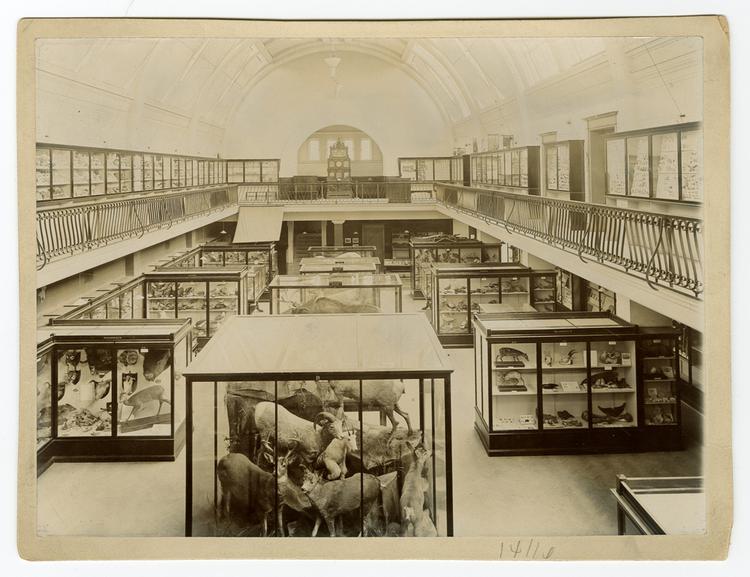
Teaching taxonomy
During the early 1900s, the cases were arranged so that specimens belonging to the same group of animals were displayed together in taxonomic order.
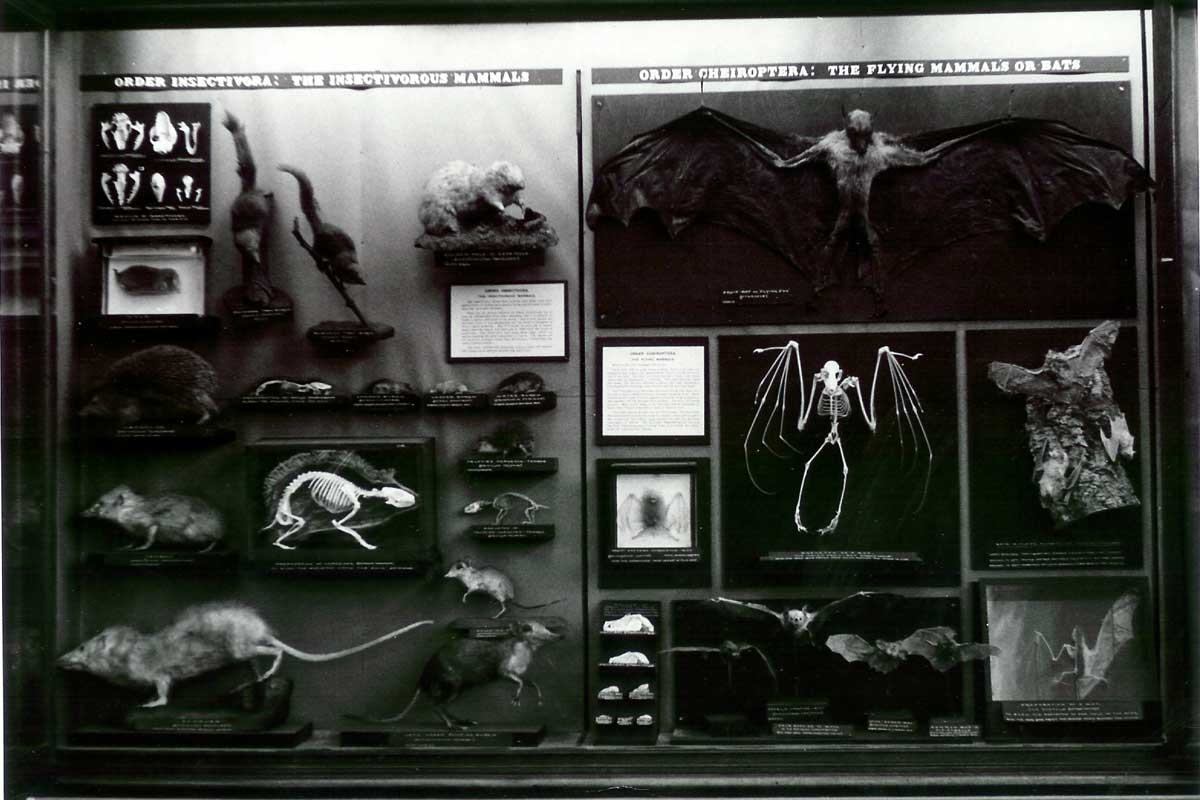
Survey of Animal Kingdom
By the 1910s, the balcony cases were all set out more formally as ‘A Survey of the Animal Kingdom’.
This provided an overview of the characteristics of the main animal groups, as seen in this case containing corals and comb-jellies.
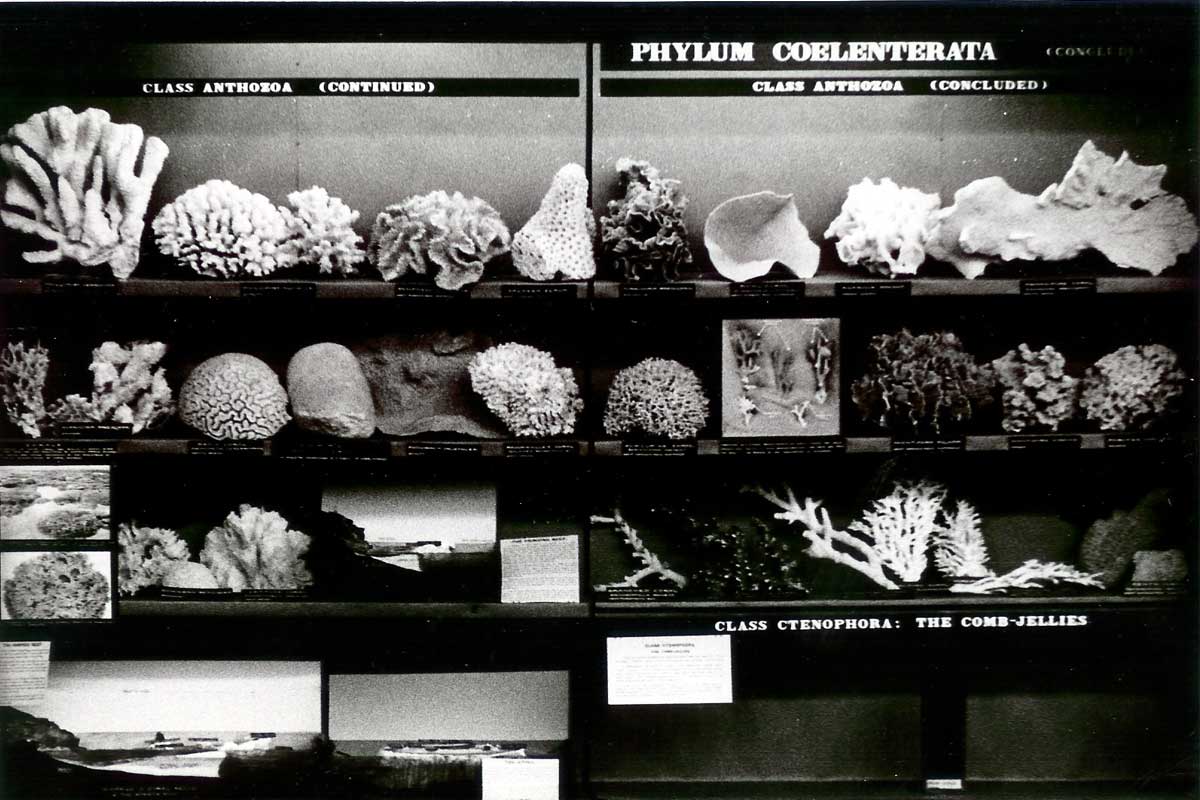
Evolution
The 1910s also saw the introduction of cases in the main hall which explained the ‘Evolution of Animals’. These showed evidence for evolution and theories of evolution. Cases such as ‘Evolution of the Horse’ from this time are still in the gallery today.
These displays about evolution helped explain topics like domestication or artificial selection.
Displays like this one about pigeons shows the breeds that were bred from a wild ancestor, the Rock Pigeon, and are known today as Fancy pigeons. This is an example of artificial selection.
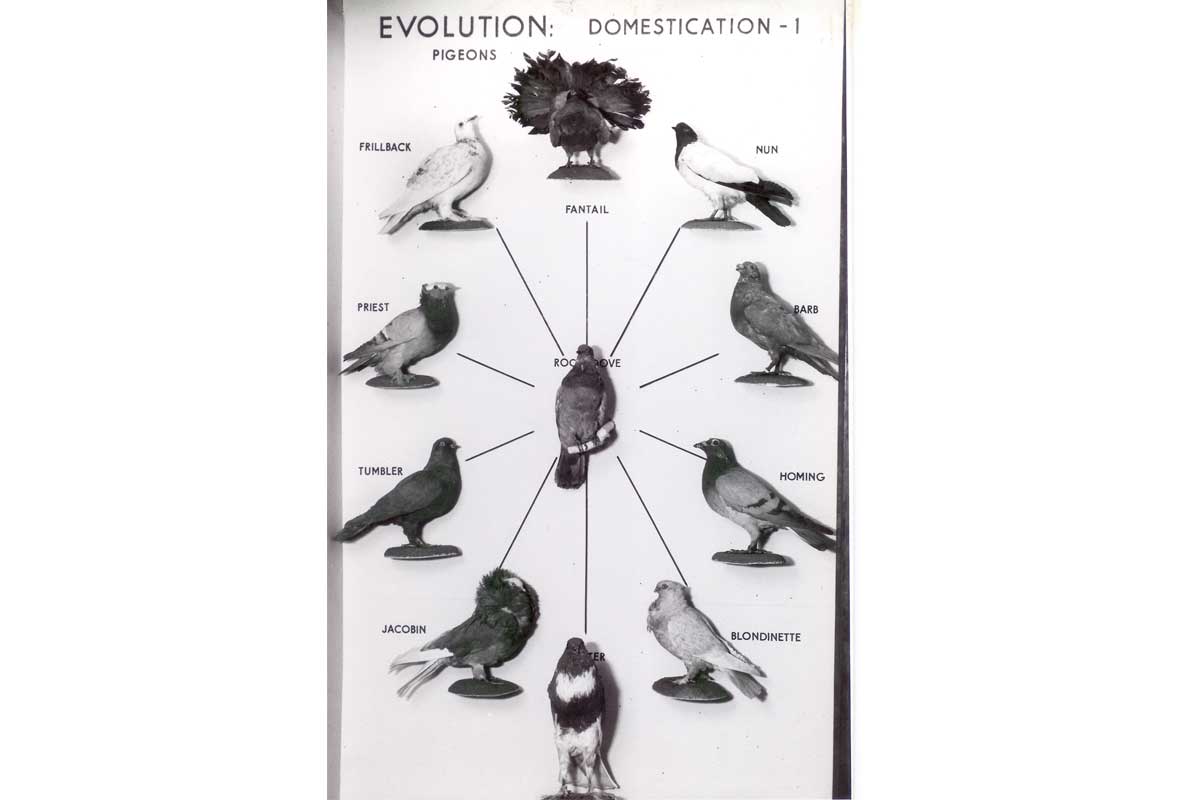
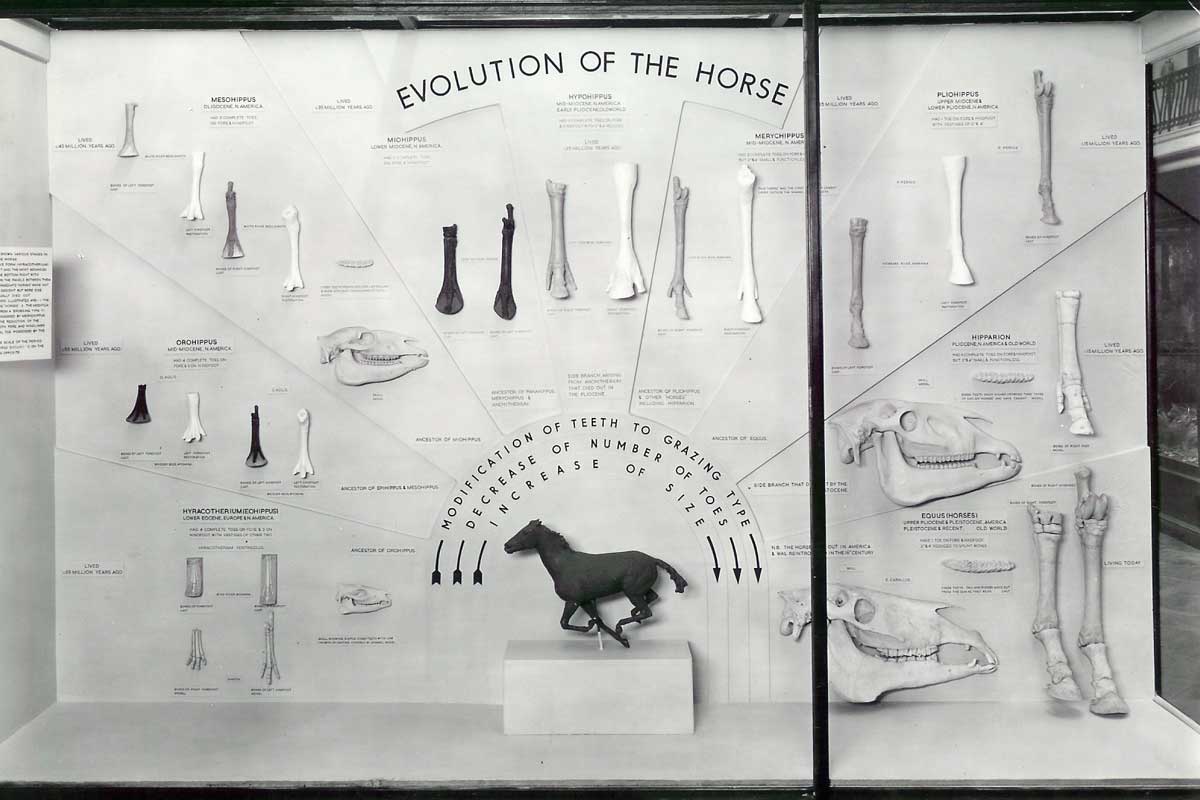

Adaptations
During the 1910s and 1920s, a series of displays on animal adaptations were introduced into the gallery.
The ‘Animal Locomotion’ display showed how animals are adapted for movement, such as swimming, climbing and flying.
The ‘Animal Defences’ display highlighted strategies used by animals to escape predators.
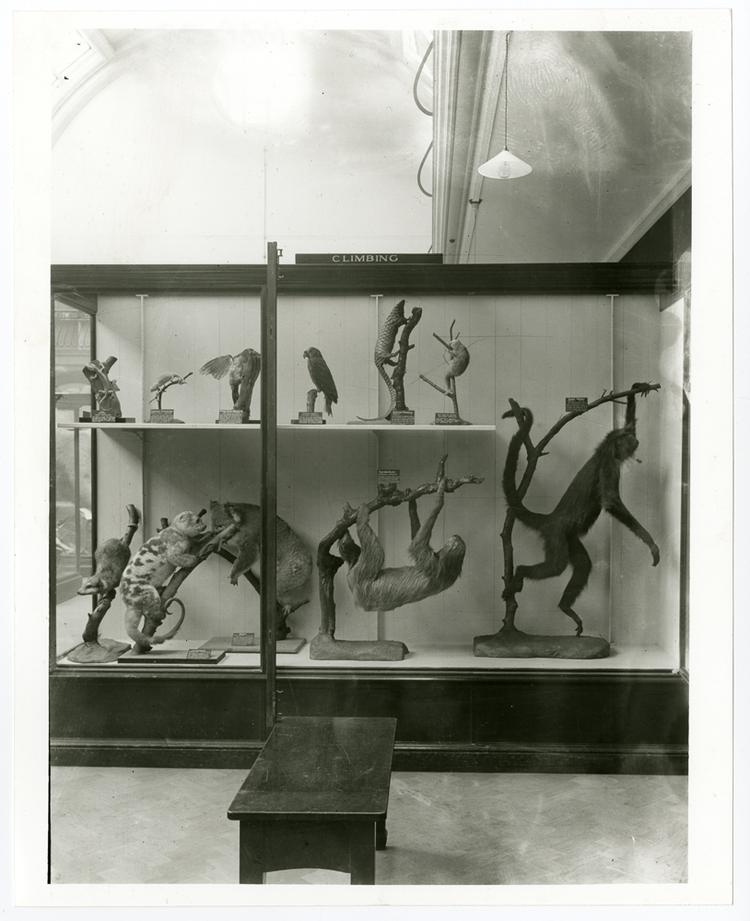
Photograph of a display case in the Natural History Gallery titled 'Climbing', circa 1914
Archive
Habitat groups
By 1939, displays of several habitat groups were added to the gallery.
These were bought from the famous London taxidermy firm Rowland Ward Ltd and showed familiar British species in their ‘natural’ settings.
This provided a greater opportunity to introduce the subject of ecology into the gallery.
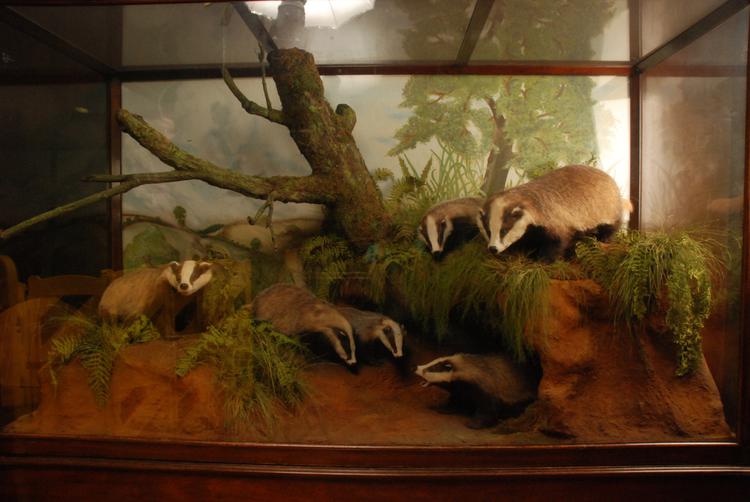
Eurasian Badger
Natural History
1948 onwards
In 1948, the large North American mammals were removed from the gallery and sold to a local merchant.
Only the walrus survived, seen here in this photograph of the gallery taken around 1938.
In spite of this change, the gallery today retains the look, feel, and much of the content of our earlier displays.
